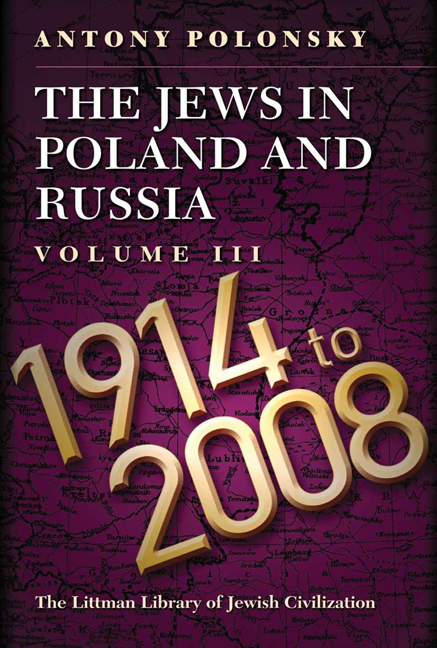Book contents
- Frontmatter
- Dedication
- Acknowledgements
- Contents
- List of Maps
- List of Tables
- Note on Transliteration
- Note on Place Names
- Maps
- General Introduction
- PART I FROM THE FIRST WORLD WAR TO THE SECOND
- PART II WAR AND GENOCIDE, 1939–1944
- PART III FROM THE END OF THE SECOND WORLD WAR TO THE COLLAPSE OF THE COMMUNIST SYSTEM
- EPILOGUE JEWS IN EASTERN EUROPE AND RUSSIA SINCE THE END OF COMMUNISM
- Conclusion
- Glossary
- Bibliography
- Index
5 - Religious Life in Inter-War Poland
- Frontmatter
- Dedication
- Acknowledgements
- Contents
- List of Maps
- List of Tables
- Note on Transliteration
- Note on Place Names
- Maps
- General Introduction
- PART I FROM THE FIRST WORLD WAR TO THE SECOND
- PART II WAR AND GENOCIDE, 1939–1944
- PART III FROM THE END OF THE SECOND WORLD WAR TO THE COLLAPSE OF THE COMMUNIST SYSTEM
- EPILOGUE JEWS IN EASTERN EUROPE AND RUSSIA SINCE THE END OF COMMUNISM
- Conclusion
- Glossary
- Bibliography
- Index
Summary
We saw that the education of the youth had declined greatly. The old ḥeder— where Jewish children were raised on the Bible, Talmud, and commentaries, and aspired to go to a yeshiva—was now disappearing. In its place came the schools of the secularists, which do not teach the Bible or Mishnah, and, furthermore, fill [children] with deceitful opinions and secular views.
RABBI AVROHAM JOFFIN, 1937Everything that tied us to prophecy, everything that planted in us the hope for the return of prophecy, is disappearing. In his spiritual life the Jew has been left with nothing on both sides … he forgets his God and he cannot truly worship strange gods even though he understands and recognizes them.
HILLEL ZEITLIN, Our Ideal, 1910JEWISH LIFE IN POLAND was characterized by a high degree of religious intensity. In the words of Rafael Scharf, describing the situation on the eve of the Second World War:
The community was fragmented and torn by internal strife, but there was also a sense of sharing a common fate that transcended social and political differences. There was a marked spirituality even among the non-religious, a response to what was felt to be the Jewish ethos, a deeply ingrained universal conviction that beyond the daily sweat and strife, men had to aspire to higher things.
A number of developments took place within Jewish religious life in these years that derived from the major changes that had occurred before 1914. The interwar years saw important transformations within the hasidic and mitnagdic traditions. Both began to engage more actively with the secular world. In particular, they developed a set of educational institutions that they hoped would preserve the faith of the next generation and ensure the continuity of the traditional Jewish way of life. The modern synagogues in Warsaw, Częstochowa, Krakow, Lviv, and elsewhere in Galicia continued to evolve; their congregations and some of their rabbis moved away from classical integrationism towards a more Zionist view of the world. In addition, a number of significant religious figures emerged in these years, Hillel Zeitlin and Kalonymus Kalman Shapira, both of whom perished in the Holocaust, and Abraham Joshua Heschel, who was later to establish himself in the United States.
- Type
- Chapter
- Information
- The Jews in Poland and RussiaVolume III: 1914 to 2008, pp. 184 - 204Publisher: Liverpool University PressPrint publication year: 2012

